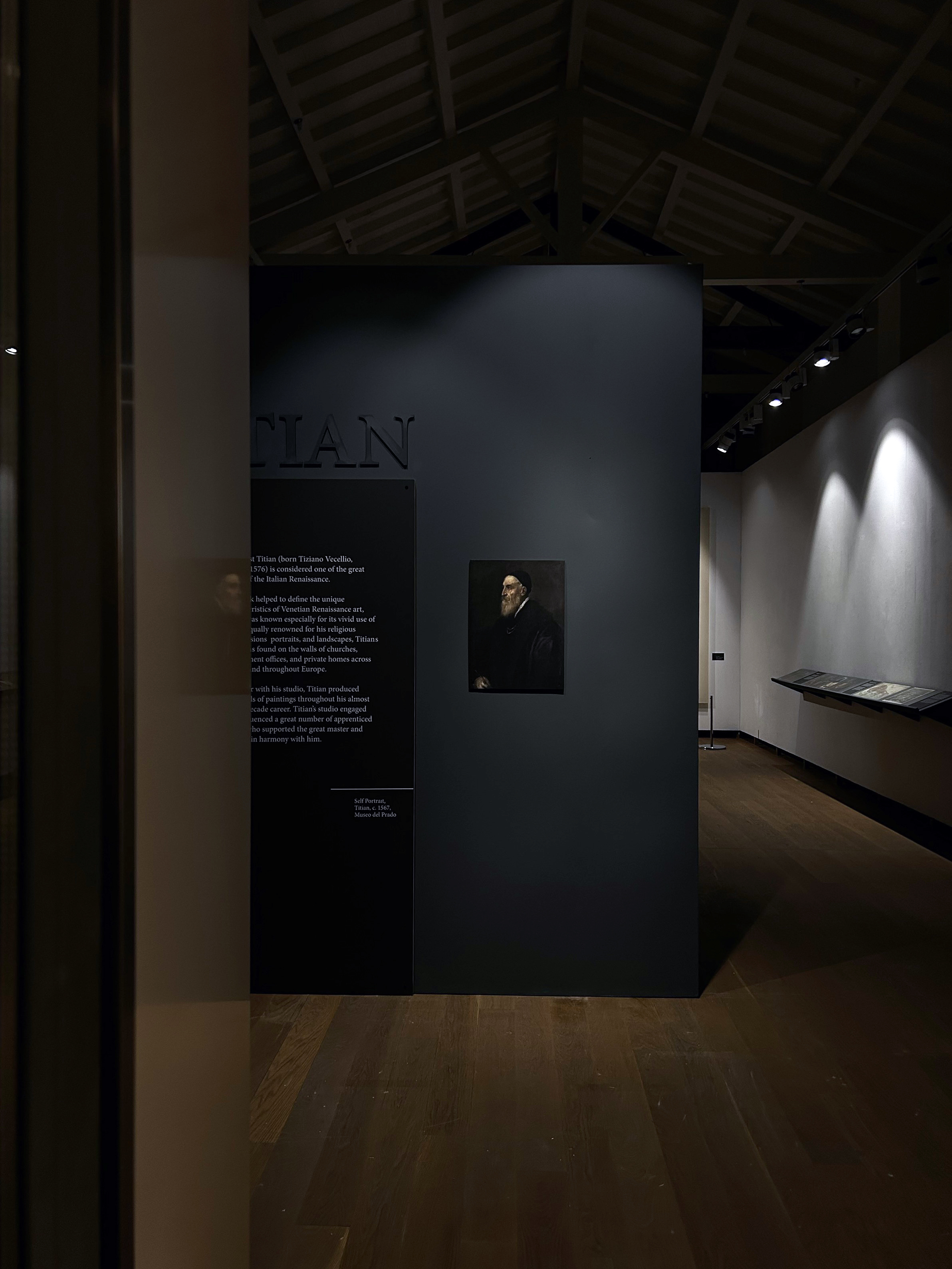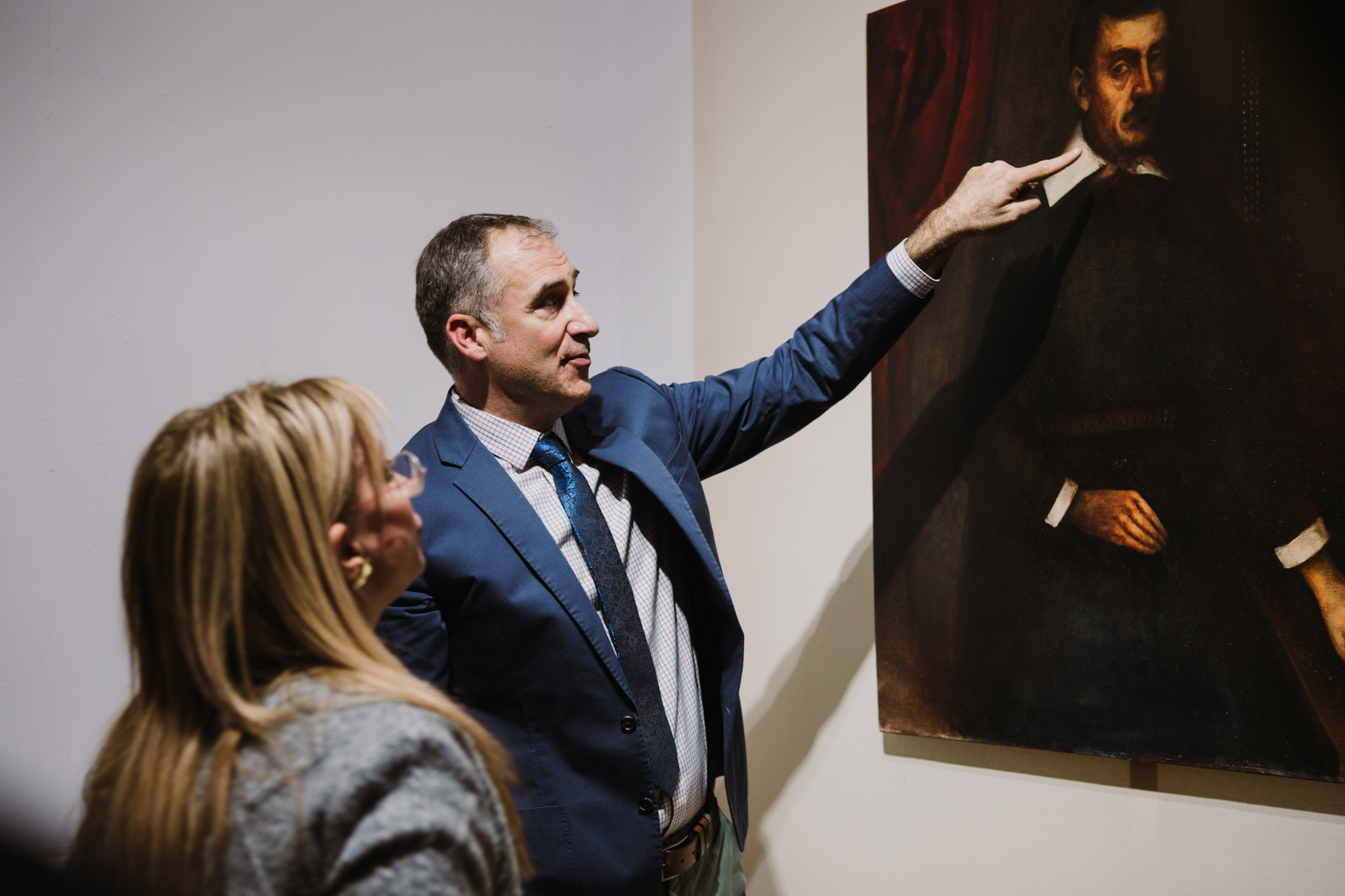“Unseen Gaze: The Hidden Portrait Under Titian's Ecce Homo": Exhibition Presenting CyI Research a Great Success, Receives Worldwide Media Attention
Research by CyI’s APAC Labs/ STARC featured in the recently opened exhibition in Limassol, Cyprus, "Unseen Gaze: The Hidden Portrait under Titian's Ecce Homo," has been well-received by the attending public and is drawing significant media attention around the globe. In addition to widespread coverage in Cyprus, major international outlets including FORBES, Smithsonian magazine, Reuters, CNN, Repubblica (IT), RAI (IT), The Independent UK, Kathimerini GR, and Artnet, have published the exciting interdisciplinary research work presented in the exhibition, which showcases the unique analysis, uncovering and re-creation of a hidden portrait beneath Titian's Ecce Homo through the collaboration of science and art. Reports highlight the innovative use of cutting-edge technologies, imaging and non-invasive analytical techniques to reveal secrets beneath the canvas (https://apaclabs.cyi.ac.cy/news/current-exhibition-unseen-gaze/).
The exhibition in Limassol is organized between January 24 and March 10, 2025 by the Cyprus Institute/ STARC/ APAC Labs, the Organization Lemesos 2030 - European Capital of Culture Candidate City and the Limassol Municipality and its Municipal Arts Center- Apothikes Papadaki.
The exhibition was inaugurated on Friday, January 24 by the Mayor of Limassol, Mr. Yiannis Armeftis, who highlighted the importance of this unique cultural initiative for the city, stressing that the exhibition is the result of team research work of The Cyprus Institute, which is presented to the public with the generous sponsorship of Dr. Andreas Pittas. This particular work of art, which dates back to around 1570, noted the Mayor of Limassol, has enormous value as it is part of the World Cultural Heritage. The re-creation of the representation of Titian’s “invisible work”, said Mr. Armeftis, was revealed with the use of technology and the valuable collaboration of artist Erato Hadjisavva.
Dr. Andreas Pittas, Member of the CREF Board of Trustees and Chairman of the Board of Directors of the European Capital of Culture - Limassol 2030 Organization, in his greeting, stated that the presentation of the work of the great Venetian painter Titian, in Limassol, is part of the Organization's ambitious strategy to make the city the next European Capital of Culture for 2030. Dr. Pittas made special mention of the research work and the decisive contribution of Cyprus Institute's APAC Labs / STARC in the study and analysis of Titian's work, which, as he said, developed innovative methods and technologies that have literally opened up new fields of research and knowledge. This particular exhibition, Dr. Pittas indicated, presents the methodology followed in the analytical study of Titian's work, as well as some of the unique scanning instrumentation developed in close collaboration with the C2RMF laboratories at the Louvre Museum in France.
Professor Stavros Malas, President of The Cyprus Institute, praised the important research work carried out at the Andreas Pittas Art Characterization Laboratories (APAC Labs), which operate at the Science and Technology Research Center in Archaeology and Culture (STARC) of The Cyprus Institute, underlining their unique contributions to the study and analysis of works of art, monuments and archaeological objects. Our culture, Professor Malas noted, is our second DNA, but we do not study this DNA as much as we should. To do this, he said, we need art-loving and generous donors, who will contribute to the creation of the necessary infrastructure. The Cyprus Institute, over the past 20 years, Professor Malas emphasized, has such solid and steadfast supporters, as Dr. Andreas Pittas.
The Artistic Director of the Limassol 2030 – European Capital of Culture – Candidate City Organization, Eleana Alexandrou, pointed out that Limassol claims the title of the largest cultural institution in Europe, an institution that can transform the experience of our city, renew our relationship with it and strengthen the bonds between us. In a rapidly developing city like Limassol, Ms. Alexandrou noted, we need culture and the arts, the prospect for inspiration, discovery, creation, but also curiosity for the unknown, behind the obvious, to remain active, to nourish our spirit, but also to keep the cultural industry of Limassol alive and connected to other industries and sciences.
Titian’s Ecce Homo (ca. 1570, oil on canvas), depicting Christ accompanied by Pontius Pilate and the figures of two of his captors, was documented and analyzed with the help of a broad range of advanced digital imaging and analytical spectroscopic tools aiming to map its material aspects and to uncover details of the works history and artistic techniques. Guided by the observations of Prof. Paul Joannides and a preliminary X-ray on the existence of an underpainting depicting a man, APAC Labs’ researchers were able to document the stratigraphy of the canvas and to reveal the material presence of a complete portrait, painted at 180’ degrees angle, under the Ecce Homo composition.
In preparation for conservation, microscopic observations of the craqueleure (pattern of fine cracks that form on the surface of old paintings) of the Ecce Homo showed the existence of different pigments under the composition. Their systematic study and analysis through the cracks, was like uncovering a puzzle. The close documentation and analysis of the materiality of painting layers led to a better understanding of the artistic strategies employed by the Renaissance master and his studio when reusing canvases. A unique discovery was to map the direct relation of the two paintings and to identify how features of the underpainting influenced details of the compositional development of the Ecce Homo work. Prof. Ioli Kalavrezou provided expert guidance and observations in efforts to locate and understand the relation of the two works.
The more recent use of a new multi-modal scanner, combining Macro X-Ray Fluorescence (MA-XRF), Reflectance Spectroscopy (RIS), and Luminescence Imaging Spectroscopy (LIS), permitted the complete material mapping of the two works and the unique scientific visualization of the portrait presenting an unknown professional man standing in front of a desk in an interior space. The prototype multi-modal scanner was developed by APAC Labs / STARC in close collaboration with the Centre de recherche et de restauration des musées de France (C2RMF), the Fondation des Sciences du Patrimoine (FSP), and the Centre national de la recherche scientifique (CNRS) in France.
In sum, the interdisciplinary scientific study of the Ecce Homo further confirmed its attribution to the great Renaissance master and has enriched the history of the iconography and composition of the Ecce Homo theme by Titian. The material re-discovery of the hidden portrait has shed light on the reuse of canvases in the studio of the master. For unknown reasons the portrait was painted over with the Ecce Homo composition. The fact that the new composition was effectively executed directly on the portrait painting points to an experienced, confident artistic hand, plausibly tracing the work of the leading studio artist, Titian himself!
Scientific results and visualization led to the re-creation of the lost painting with the close collaboration of artist and Dean of the Athens School of Fine Arts, Erato Hadjisavva, who drew of APAC Labs’ research data to draw and re-imagine the hidden portrait. Science, technology and art engaged each other in a cyclical dialogue aiming to shed light on centuries-old pictorial secrets and artistic practices.
Exhibition Details:
-
Event: Unseen Gaze – The Hidden Portrait under Titian’s Ecce Homo
-
Location: Apothikes Papadaki, Limassol
-
Dates: 24 January – 10 March 2025
-
Opening hours: The exhibition will be accessible during regular hours at Apothikes Papadaki throughout the duration of the event.
-
Organisers: The Cyprus Institute – Andreas Pittas Art Characterization Laboratories / STARC, Lemesos 2030, Limassol Municipality.
For more information or to book a guided visit (for schools, universities and organisations) please contact:
Guided tour hours: Wednesday 4:30 PM–5:30 PM, Friday 4:30 PM–5:30 PM, and Saturday 11:00 AM–12:00 PM and 12:00 PM–1:00 PM.

